Posts Tagged ‘EPA’
EPA Scientists Say Current Smog Standard Not Protective Of Public Heath Even While TCEQ Blows Off Current One
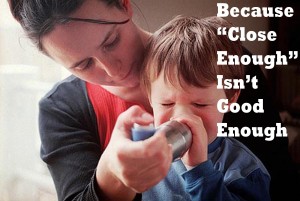 It's been a pretty nice summer in DFW so far hasn't it? Wetter and cooler than usual. More wind. According to the stats, this past month was the first June without any 100 degree days in seven years or so. Consequently, it's also the first June in forever that hasn't seen any "Orange" or "Red" ozone alert days. If this keeps up, DFW may actually come into compliance with the 1997 ozone standard of 85 parts per billion (ppb) over an 8-hour time period – a first as well.
It's been a pretty nice summer in DFW so far hasn't it? Wetter and cooler than usual. More wind. According to the stats, this past month was the first June without any 100 degree days in seven years or so. Consequently, it's also the first June in forever that hasn't seen any "Orange" or "Red" ozone alert days. If this keeps up, DFW may actually come into compliance with the 1997 ozone standard of 85 parts per billion (ppb) over an 8-hour time period – a first as well.
But unless you think "global weirding" is going to produce these kinds of summers routinely from here on out, there's little cause for comfort. This year's cleaner air is a direct result of cooler weather. Substitute the hellish summer of 2011 for this mild one and you'd be seeing ozone alerts filling up your e-mail box. As a result, it's not out of the question we could meet the standard this year, but flunk it in 2015 if the weather reverts back to "normal."
In addition, while we may come in under the 1987 smog standard for the first time, the public health goal posts have moved with better science. In 2008, the Bush Administration lowered the acceptable level of smog to 75 ppb. That's the goal of the clean air plan that Downwinders and other groups are fighting the state over right now, saying it's not adequate to even get to that 75 ppb level.
Texas Commission on Environmental Quality staff say we don't need to implement any major pollution control measures on cement kilns, power plants, or natural gas facilities to reach this 75 ppb goal by the deadline in 2018. All we have to do is sit back and let a new federal gasoline standard hit the market in 2017 and we'll all be fine – well, except for those millions of residents who'll be breathing-in smog greater than 75 ppb on the north and western side of the Metromess. But the TCEQ staff say we'll be "close enough." No harm, no foul say the folks from the agency where smog is not considered bad for you.
But close enough should only count in horseshoes and hand grenades, not what people breathe into their lungs. And while some of us are trying to make sure the new TCEQ plan is serious about reaching an air quality goal that's now six years old, the level of ozone considered "safe" by experts is once again going down.
In a letter to EPA Administrator Gina McCarthy last week, the Agency's own Clean Air Scientific Advisory Committee (CASAC) recommended a new smog standard of between 60 and 70 ppb, saying that there's a boatload of evidence showing that the 75 ppb level is not protective of human health, and even at 70 ppb there's significant public health harm done by bad air.
"At 70 ppb, there is substantial scientific evidence of adverse effects….including decrease in lung function, increase in respiratory symptoms, and increase in airway inflammation. Although a level of 70 ppb is more protective of public health than the current standard, it may not meet the statutory requirement to protect public health with an adequate margin of safety….our policy advice is to set the level of the standard lower than 70 ppb within a range down to 60 ppb…"
This recommendation was not unexpected. Every five years, the CASAC is legally obligated to review the scientific literature to make sure the federal ozone standard is giving adequate protection to public health. The last time it did so in 2008, the panel came to a similar conclusion to lower it somewhere between 65 and 70 ppb, but the Bush Administration ignored its own scientists and chose the higher standard instead. An Obama EPA was supposed to correct that mistake when it came into office, but then-EPA head Lisa Jackson got mugged on her way to the White House by the President's re-election campaign. Any changes were put on hold until that five year review clock began ticking again. And now the official alarm has gone off on that clock. The result is a re-affirmation of the earlier findings, this time with even more science to back up the changes.
As a result, EPA will have to decide whether or not to adopt the tougher recommendations of its scientists by December 1st of this year. If they do, a new standard will be officially adopted by 2015 and we'll have to write a new clean air plan in a couple of years to achieve that goal by the end of the decade. If it doesn't, they'll be sued, with the CASAC letter as exhibit #1, and they'll lose and have to set a new standard anyway.
Why is that important to the current debate over TCEQ's plan to meet the 75 standard? Because the TCEQ plan leaves at least four monitors, spread out from Denton, to Keller, to Eagle Mountain Lake above 75 ppb – a standard that EPA scientists now say conclusively is not protecting public health.
"Close enough" to that 75 ppb level turns out to be too far away from real protection in light of the new recommendations for a standard below 70 ppb from the Science Advisory Committee. And that assumes you believe the computer modeling TCEQ has done to support its plan. To date, the state is 0 for 5 going back to 1991 in being able to accurately predict these things. If history is any indication, the state's plan will fail to reach its goal of 75 ppb at just about every one of the 20 monitors in DFW, not just four.
If you know your target of 75 ppb of smog over an 8-hour period is no longer a safe standard, and your current plan condones levels above that, it's not really a clean air plan.
December is not only when EPA must decide if it's going to pursue a lower smog standard. It's also when the state is scheduled to take public comment on its current DFW anti-smog plan. So you have the surreal possibility of holding public hearings over the merits of an already obsolete plan that isn't even serious about reaching its obsolete goal.
This is why DFW residents must demand a plan from Austin that aims lower, not higher. It's why they must demand the EPA not allow TCEQ to get away with being "close enough" to a standard that's not protecting their health. A real clean air plan would be shooting for an average of 65-70 ppb knowing that that standard will be coming down the road sooner or later. A real clean air plan wouldn't allow any monitor to exceed the current 75 standard. A real clean air plan would try to do its best to protect public health by implementing pollution control measures on the sources of smog that are the cheapest and most effective to target – Midlothian's cement plants, east and central Texas coal plants, and the natural gas industry.
And that's exactly what Downwinders and other members of the new DFW Clean Air Network are trying to do. We're pushing for stricter EPA enforcement of the 75 ppb standard, and we're pushing for adoption of "Reasonably Available Control Measures" on the cement plants and gas compressors – now, not later. Because the only way DFW breathers are going to get a better clean air plan out of Austin and Washington is by organizing for one themselves.
Sierra Club Sues EPA Over Delayed “Bump Up” for DFW Smog Status
 DALLAS, TX – The U. S. Environmental Protection Agency (EPA) missed a key deadline in 2013 to classify smog air pollution in Dallas-Fort Worth as ‘severe,’ prompting the Sierra Club to file suit against the agency yesterday afternoon in the U.S. District Court for the District of Columbia for failing to properly act to protect the health of the people of North Texas.
DALLAS, TX – The U. S. Environmental Protection Agency (EPA) missed a key deadline in 2013 to classify smog air pollution in Dallas-Fort Worth as ‘severe,’ prompting the Sierra Club to file suit against the agency yesterday afternoon in the U.S. District Court for the District of Columbia for failing to properly act to protect the health of the people of North Texas.
The levels of smog in Dallas-Fort Worth are among the highest in the country, and only smoggy California, Houston and Baltimore have levels higher than North Texas. Ozone is the main ingredient in the smog in Dallas-Fort Worth. It triggers asthma attacks in children and is responsible for the red and orange bad air alert days the region sees every year.
“While we recognize that the Environmental Protection Agency has many priorities, nothing is more important than protecting our children from the dangers of smog and the asthma attacks that it can trigger,” said Dr. Neil Carman of the Lone Star Chapter of the Sierra Club. “The Clean Air Act has mechanisms in place to reduce pollution for areas with long-standing smog problems like Dallas-Fort Worth, but those mechanisms don’t get triggered unless EPA acts.”
The Texas Commission on Environmental Quality (TCEQ) had a federal deadline to meet the public health standard by 2009, and when the state’s clean air plan failed to reduce pollution levels to meet the protective standards of the Clean Air Act, regulators received an extension to meet the standard by the end of the 2012.
State regulators again failed to develop a plan that would lower smog levels to protect people living in the region. After both failures, the law required EPA to classify Dallas-Fort Worth as having a “severe” ozone problem and publish the notice in the Federal Register in 2013. This action would have required polluters to take additional steps to clean our air. Unfortunately, U.S. EPA missed the deadline, prompting the Sierra Club to file suit late Tuesday, May 20, 2014.
"The Clean Air Act requires polluters to take extra steps in places like Dallas-Fort Worth that have been chronic violators of smog standards," said Jim Schermbeck with Downwinders at Risk, a clean air group based in Dallas-Fort Worth. "But asking Rick Perry to enforce the Clean Air Act in 2014 is like asking Wall Street tycoons to care about low-income families. That's why six million residents need the EPA to do its job and guarantee North Texas safe and legal air."
Because the EPA missed the 2013 deadline to properly classify the Dallas-Fort Worth area as a “severe” ozone smog area, industries are being allowed pollute more than they would otherwise, delaying the protections children, the elderly and people with respiratory illnesses in the region need.
"Today's action is the first step in requiring the EPA to finally solve the ozone problem in D-FW. Too many Texas children end up in the emergency room or miss school because of asthma and other breathing difficulties. We have to hold EPA to its legal requirements to give these families a chance to breathe easier," said Nia Martin-Robinson, Beyond Coal organizer with the Sierra Club in Texas.
Coal-fired power plants across Texas, cement plants in Midlothian and fracking in the Barnett Shale are significant contributors to smog-forming pollution to the region. State regulators have failed to require the most up to date pollution controls on these sources, contributing to the repeated failure of state clean air plans.
Downwinders Had A Good Day in Court Battling EPA Over Cement Plant Rules
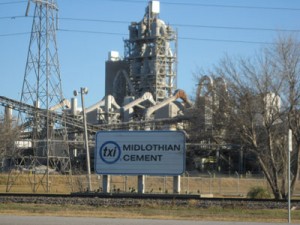 Downwinders has been trying to get new emission limits for cement plants since the mid-1990's. We're still trying.
Downwinders has been trying to get new emission limits for cement plants since the mid-1990's. We're still trying.
The first real reform in those rules during the Clinton Administration were pathetically inadequate. Downwinders and other groups assisted by DC-based Earth Justice sued to get them strengthened. We won. When new rules finally emerged from EPA in 2009, they were much better. Many of you came out to the historic national hearing at the DFW Airport hotel to testify in favor of them.
These rules were on their way to being signed by President Obama when they got hijacked by industry at their stop at the Office of Management and Budget, which must review all new regulations. When they emerged, they were unrecognizable in many ways, with deadlines pushed back by years and the important Particulate Matter standard being significantly weakened.
Once again, we're back in court trying to get these watered down rules thrown out. Last week, the DC appeals court that usually takes up federal regulatory fights heard oral arguments from both sides, and even the Republican judges on the panel were skeptical of the Administration's rewrite job.
Reprinted in full below is an inside-the-Beltway account of the proceedings that gives you some idea of what's at stake and what a good day citizens and their representatives enjoyed in court. No date on when to expect a ruling. Even then, if we win, the rules go back to EPA to be rewritten again, albeit with more judicial constraint…theoretically at least.
Judges seem skeptical of EPA claims in cement emissions case
Jeremy P. Jacobs, E&E reporter
Published: Thursday, October 24, 2013
Public health advocates argued in court today that U.S. EPA unlawfully weakened and delayed air standards for cement manufacturers, appearing to gain some traction with a panel of federal appellate judges.
The Natural Resources Defense Council contends EPA caved to industry pressure when it revised its National Emission Standards for Hazardous Air Pollutants, or NESHAP, for portland cement kilns and pushed back its compliance date by two years.
EPA's standards apply to several pollutants, including particulate matter, mercury and other acid gases. The agency revised the particulate matter standard after a court ruling in 2011, but advocates claim the agency did more than the ruling required.
James Pew of Earthjustice, representing the NRDC, told the U.S. Court of Appeals for the District of Columbia Circuit that EPA "gratuitously weakened the particulate matter standard" and violated the "plain and literal meaning" of the Clean Air Act.
Further, he said, many of the issues EPA addressed with its changes "didn't come up" in the previous case.
The cement NESHAP has long been the subject of controversy and litigation.
The kilns are one of the top sources of man-made mercury emissions in the United States. Public health advocates forced EPA to set the standards in a 2010 lawsuit, and when the agency issued the standards later that year it said they would prevent 960 to 2,500 deaths per year.
Industry, however, quickly challenged the standards at the D.C. Circuit. In December 2011, the court ordered EPA to reconsider the standards by taking commercial incinerators that burn solid waste out of its calculations. However, the court largely left the standards in place, including their 2013 compliance deadline (E&ENews PM, Dec. 9, 2011).
When EPA recalculated the standard for particulate matter, the advocates claim the agency made it less stringent. Additionally, EPA reached a settlement with the portland cement industry to delay compliance to September 2015 for all pollutants — not just particulate matter (Greenwire, Dec. 7, 2012).
Public health advocates challenged both actions, as well as a shift from continuous monitoring to one-time annual stack testing for compliance — which also changed the particulate matter standard. The environmentalists also question the standard's inclusion of an "affirmative defense" that protects kilns from citizen lawsuits if they violate the standards during an unavoidable malfunction.
Each issue came up today before a three-judge panel, which included two judges who are considered potential future Supreme Court nominees. The panel appeared receptive to some of the advocates' arguments but not to others.
For example, Judge Brett Kavanaugh, one of the country's leading conservative jurists, appeared skeptical of EPA's decision to delay standards for mercury and other gases to 2015, even though the Clean Air Act says standards must take effect within three years. The 2010 standards for those pollutants, which weren't affected by the D.C. Circuit ruling in 2011, should be in effect now.
"I don't understand," said Kavanaugh, a Republican appointee. "I need help. I don't understand the interrelatedness."
Further, Senior Judge Harry Edwards, a Democratic appointee, said EPA could have easily linked the standards by saying it wasn't "practicable" to meet some without meeting the others. But EPA, Edwards said, never made that argument in the rulemaking.
"I'm really not following this," Edwards said. "Where does the agency make the finding … that compliance couldn't be done practicably?"
Matthew Oakes of the Department of Justice, representing EPA, countered that all the standards are related because the pollution control technology required to limit particulate matter also controls emissions of mercury and other gases. Therefore, it didn't make sense to require kilns to install technology for mercury, for example, before it knew the final particulate matter standard, he said.
That argument was echoed by Carter Phillips of Sidley Austin LLP, representing the cement industry, which intervened in the case.
"You cannot implement any of them in a one-off system," he said.
It was unclear which way the judges were leaning with regard to the advocates' arguments surrounding the particulate matter standard itself. But they appeared receptive to their challenge to EPA's affirmative defense.
Oakes argued that the advocates lacked standing to challenge the affirmative defense, meaning they had failed to prove how they would be injured by it. That notion was flatly rejected by the panel, which said the defense would allow kilns to, at times, exceed the standards, which would harm human health. Therefore, the advocates have grounds to bring the lawsuit, the judges said.
The panel was also skeptical of EPA's arguments on the substantive issue of whether EPA could create the affirmative defense in the first place. Judge Srikanth Srinivasan, President Obama's first appointee to the D.C. Circuit and a leading liberal judge, contended that the Clean Air Act didn't grant EPA that ability.
"This authority wasn't delegated to the EPA to begin with," he said.
EPA Staffer Who Oversaw Cement Plant Rule Gutting Will Be Your Next Administrator
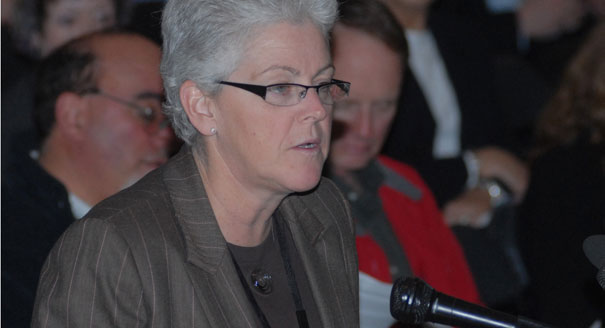 According to a number of different Washington-DC based news outlets, President Obama has picked current EPA Director of Air and Radiation, Gina McCarthy, as his choice to head up the entire Agency for his second term.
According to a number of different Washington-DC based news outlets, President Obama has picked current EPA Director of Air and Radiation, Gina McCarthy, as his choice to head up the entire Agency for his second term.
McCarthy was the EPA staffer in charge of explaining to citizens why new cement plant emission rules the Agency and the President had already signed-off on in 2010 were gutted last year just prior to adoption, despite unanimous citizen opposition to the changes at a national hearing at Arlington City Hall last August. Instead of a 2013 compliance deadline, the industry now has until 2015. And real time particulate matter monitoring was tossed in favor of a using a formula every so often.
McCarthy's paraphrased explanation: "These new rules are gonna make kilns ever more awesome!"
In a meeting last year with kiln activists, she couldn't explain why the rule was being changed, who wanted it changed, or where the order to change it came from. It was a mystery even to the most cynical DC-based environmentalists. And now she's in charge of the whole show.
Some are interpreting McCarthy's promotion as a first step in the Administration taking executive action on climate change, since she headed up some recent initiatives on that front.
A Boston native, McCarthy came to Washington after serving as the top environmental regulator in Massachusetts and Connecticut under Democratic and Republican governors.
Former Massachusetts Governor Michael Dukakis, a Democrat, appointed her chair of a council to oversee a review of a proposed hazardous waste incinerator in the Boston area in 1990.
She later served as an environmental policy adviser to then-Massachusetts Governor Mitt Romney and launched the state's first Climate Protection Action Plan. Romney was Obama's Republican opponent in the 2012 presidential election.
In 2004, McCarthy was appointed to head Connecticut's Department of Environmental Protection under then-Governor Jodi Rell, also a Republican, and helped lead the state into a carbon cap-and-trade system for Northeastern states, known as the Regional Greenhouse Gas Initiative.
2nd TCEQ Clean Air Plan in Four Years Fails, Leaves Air Dirtier
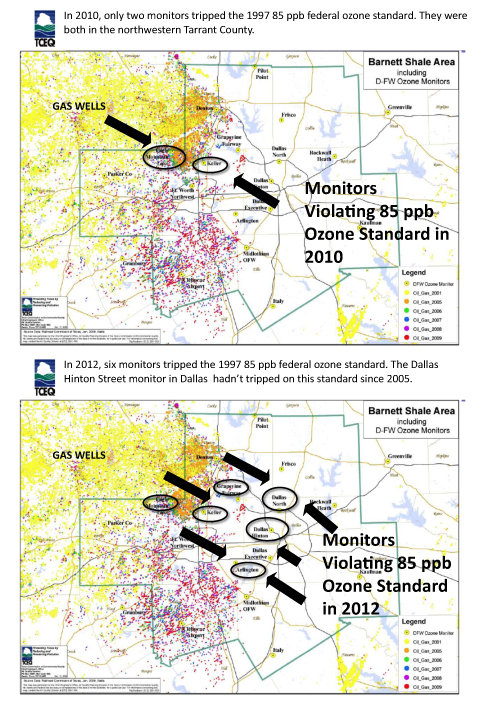 For the second time in four years a state-designed clean air plan to bring safe and legal air to DFW residents has failed, missing its goal by an even wider margin than on its first try, and leaving local air quality worse than when it started.
For the second time in four years a state-designed clean air plan to bring safe and legal air to DFW residents has failed, missing its goal by an even wider margin than on its first try, and leaving local air quality worse than when it started.
November 1st marked the official end of the eight-month 2012 ozone season. According to the Texas Commission on Environmental Quality, or TCEQ, its plan was supposed to deliver record-breaking clean air to DFW this summer on its way to bringing the region into compliance with the Clean Air Act for the first time in two decades.
The Dose No Longer Makes the Poison, But We Regulate It As if It Does
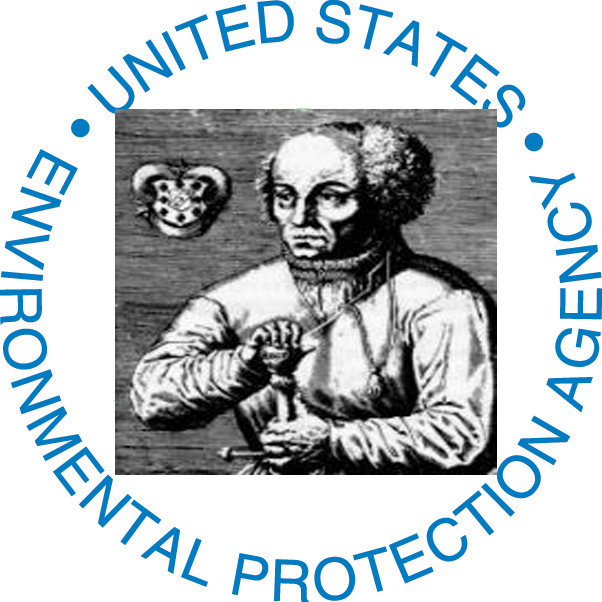 It may come as a shock, but the EPA and industry view exposures to toxic chemicals in basically the same way that a famous 16th-Century occultist named Paracelsus did over 500 years ago: The amount of exposure to a chemical determines its toxicity; the higher the dose, the more toxic it is. The lower the dose, the more benign. "The dose makes the poison."
It may come as a shock, but the EPA and industry view exposures to toxic chemicals in basically the same way that a famous 16th-Century occultist named Paracelsus did over 500 years ago: The amount of exposure to a chemical determines its toxicity; the higher the dose, the more toxic it is. The lower the dose, the more benign. "The dose makes the poison."
This approach says there's a linear one-to-one relationship between volume and harm. It's the basis of all federal, state and local environmental health regulation. It's what drives government "risk assessments." It's what allows there to be such things as "safe levels" of things that don't sound very safe.
But, what if this approach didn't capture all of what was going on physiologically between poison and victim? What if there were different effects happening at the cellular level? What if, like the Renaissance-born theory of Newtonian physics, it couldn't account for phenomenon on a smaller-scale because it didn't have the ability to see it? What if there were certain poisons that,
"depict a weird world of endocrine disruption that is as different from traditional toxicology as quantum mechanics is from the staid clockwork of Newtonian physics. When even minuscule quantities of BPA and other disrupters interact with hormone receptors at crucial moments in development — activating, jamming, hijacking or otherwise messing with their normal function — they can give rise to strange-looking experimental results, especially when other hormones are thrown into the mix."
From the journal Nature comes a case study in why no self-respecting thinking person would trust the current regulatory system to give them the final word on whether any given chemical exposure is "safe" or not.
A citizen can't underestimate the kind of threat this research presents to the Environmental Industrial and Legal Complex. Every permit ever written and awarded. Every environmental law every passed. They all depend on a Paracelsusian view of the world. Prove a different world exists and it turns everything upside down.
"A growing number of academic researchers are making just such a claim for endocrine disrupters, a large group of synthetic chemicals able to interact with cellular hormone receptors. These compounds, which range from the common weed killer atrazine and the plasticizer bisphenol A (BPA) to the antibacterial agent triclosan (used in cleansers) and the vineyard fungicide vinclozolin, don't play by the usual rules of toxicology. On the basis of conventional high-dose testing, regulators have set maximum acceptable levels for each of them that assume all doses below that level are safe. But academic researchers who have studied a wider range of doses, including very low ones found in the everyday environment, say that their experiments usually do not generate the tidy, familiar 'ski-slope' dose-response graphs of classic toxicology. Instead, most endocrine disrupters have 'non-monotonic' dose-response curves, meaning that their slopes change at least once from negative to positive, or vice versa, forming 'U' shapes, inverted 'U's or even stranger shapes that resemble undulating Chinese dragons."
It's not just endocrine disruptors that are challenging tradition. We're already seeing the contradiction between the latest science and regulations when it comes to old-fashioned poisons like lead and soot. There's a scientific consensus among the frontline researchers that there's no safe level of exposure to either one of these toxic substances, And yet, permits are still being written to allow what regulators claim are "safe levels" of them to be spewed into the air and our lungs.
Locally, UT Southwestern epidemiologist Dr. Robert Haley's groundbreaking work on Gulf War Syndrome has found similar effects in studying exposure of veterans to very low doses of nerve agents. Levels of substances that weren't supposed to make people sick individually seem to have a harmful synergistic effect when combined.
The more we can see what's happening at the smallest levels of things – whether its the vibrations of atoms in the chair you're sitting in, or the nuance of chemicals in the cells of a developing fetus – the more we find out that things are more complicated than they appear. Science is pushing us in the direction of a "Precautionary Principle" approach to regulating human chemical exposure. That's a radically different perspective that undermines the billions invested in the status quo allowing continual low level poisoning. After 500 years, maybe it's time to find a new model.
EPA Interpretation of Soot Regs Under Fire
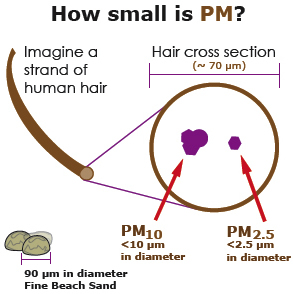 In an important challenge to the way EPA has gone about regulating the tiniest and most harmful forms of soot, or "Particulate Matter" pollution, attorneys for environmental groups seem to making some headway in the courts.
In an important challenge to the way EPA has gone about regulating the tiniest and most harmful forms of soot, or "Particulate Matter" pollution, attorneys for environmental groups seem to making some headway in the courts.
Currently, EPA is about to recommend new PM pollution rules that will reportedly lower the exposure standard for "PM 2.5" – that is, soot that's 2.5 MICRONS or less in size. A human hair is about 10 microns wide, so we're talking incredibly small particles that can easily find their way into your lungs, and then pass through directly into your blood stream.
However, when the Clean Air Act was amended in the early 1990's, the danger of PM pollution was confined to "PM 10" – particles 10 microns or less in size. So called "Coarse PM." But research over the last 20 years has pointed to the greatest danger to human health coming from the smallest kinds of PM pollution – the stuff that's 2.5 or smaller. It's been linked at very low levels of exposure not only to respiratory disease, but to heart attacks, strokes, and brain diseases similar to Parkinson's and Alzheimer's. In fact, the consensus among researchers now is that there is no level of exposure to PM 2.5 pollution that's not capable of doing some harm, that is, there is no "safe level" of exposure.
In another example of how regulations don't keep pace with science, EPA is still regulating PM 10 standards stricter than they are PM 2.5 standards, even though we now know that it's the smallest stuff that is more harmful. EPA is actually using another part of the Clean AIr Act to regualte PM 2.5 pollution than it uses to regulate PM 10 pollution. And the provision it uses for PM 2.5 allows states a lot more wiggle room than the tougher PM 10 provisions.
PM 10 pollution pouring out of a smokestack includes all PM 2. 5 pollution. But "PM 2.5 polluiton"excludes the larger coarser soot. Clear?
One of the three judges of the US Court of Appeals for the District of Columbia, David Tatel, had a hard time with the fact that EPA went outside it's own PM 10 rules to regulate a sub-set of more dangerous PM 10.
"I don't see why it makes much sense to separate out the fine particles," Tatel said. "I don't understand why the agency would do this.' Tatel indicated he did not believe the Clean Air Act required EPA to handle fine particulate matter differently than the coarser pollutants. References in the statute to PM 10 seemed to indicate Congress was referring to particulate matter in general, which would include PM 2.5, Tatel said."
This is exactly the argument EarthJustice lawyers were using. When the Clean Air Act says "fine particles" it means PM 10 and PM 2.5 – you can't regulate PM 10 without also regulating PM 2.5. But this is a law of physics that EPA is trying to undo. The Agency is actually arguing that Congress only meant to apply the standards to PM 10 pollution and no other "fine particles." It's also arguing that the challenge is a decade too late, since the original rules were passed in 1997. The judges didn't seem to be buying that defense either.
With brand new EPA regs for PM pollution expected to be announced shortly, one could reasonably assume this is mostly an academic exercise. but it's not. First, these old rules will still be in play for some time as the new ones are phased-in. It's important to get it right in the intervening period. These old regs affect PM emissions from cement kilns, boilers of all types, power plants and even cars and the public health impact of a stricter standard could be significant. Second, the interpretation EPA uses to establish the new rules could rest on whether the courts agree that it used the right provisions and language last time out.
We've been saying this a lot lately, but it's true. PM pollution is the most insidious, dangerous, and widespread form of air pollution in the world today. It is the ozone of the 21st Century in terms of how pervasive its effects are, and the size of the regulatory response to counter that harm.
More Reaction to Ron Curry EPA Appointment
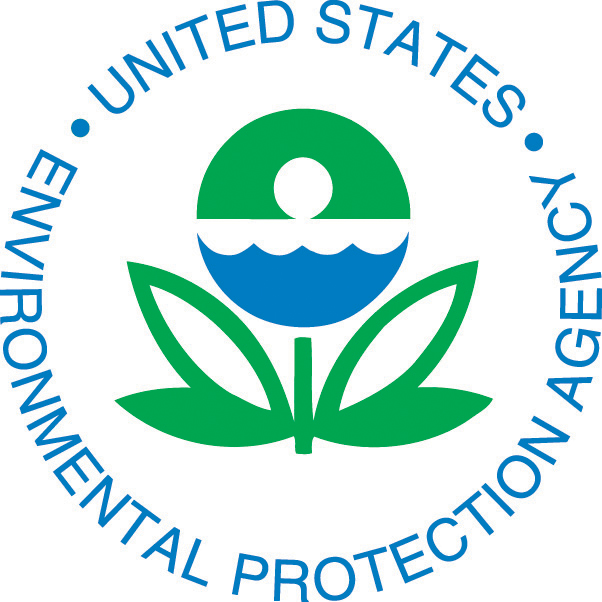 As news spreads that the Obama administration appointed former New Mexico state environmental chief Ron Curry to take Dr. Al's place as EPA Region 6 Administrator, reaction from stakeholders has been drifting in, including an already suspicious Senator Inhofe (R- Oil and Gas), who says that public comments made by Curry already raise concerns.
As news spreads that the Obama administration appointed former New Mexico state environmental chief Ron Curry to take Dr. Al's place as EPA Region 6 Administrator, reaction from stakeholders has been drifting in, including an already suspicious Senator Inhofe (R- Oil and Gas), who says that public comments made by Curry already raise concerns.
Here's an industry take from the Dallas Business Journal that helpfully combines the hucksters at the Barnet Shale Energy Education Council with the Texas Railroad Commission. And here's the Houston Chronicle talking to environmentalists in New Mexico.
While Curry seems to be a good choice, don't expect anything dramatic until after the election. Many observers were surprised the administration acted now to fill the slot instead of waiting until the dust had settled in favor of a second term.
Despite the change, the EPA won't find it any easier to deal with Austin as long as: a) Governor Perry is running for something, and b) Attorney General Greg Abbott is running for governor. Nothing personal Mr. Curry, you're just an ideological cartoon to be used for campaign fundraising.
The EPA Loss in Court You Didn’t Hear About, But Could Affect You More in DFW
 Let's face it, the EPA legal team has taken a bunch of hits lately. Losses in court over the Texas Flex permitting plan and national cross state pollution rules, among others, have gotten lots of headlines, but for various reasons may not be as awful as they first sound to environmentalists.
Let's face it, the EPA legal team has taken a bunch of hits lately. Losses in court over the Texas Flex permitting plan and national cross state pollution rules, among others, have gotten lots of headlines, but for various reasons may not be as awful as they first sound to environmentalists.
But there was a recent ruling that did hit home for metropolitan areas like DFW that are a) already in "non-attainment" of the federal ozone, or smog, standard, and, b) host lots of urban gas and oil drilling. You probably didn't hear about it, but it may have more of an impact on your air here because it once again left a large loophole in current law that allows the oil and gas sector to escape emissions "off-setting."
According to the Clean Air Act, every large industry that comes to set up shop in a non-attainment area like DFW must decrease as much pollution as it estimates it will increase. This is required so that new pollution doesn't just take the place of pollution that's been reduced from industries already operating in the area. Otherwise, there would be a large imbalance between new industries and established ones that would put air quality progress in peril.
And that's exactly what's happening in DFW.
For a decade now, gas mining in the Barnett Shale has added tons and tons of new air pollution to the North Texas airshed that has not had to be off-set with reductions. While emissions from this industrial sector grew, pollution from local cars, power plants and cement kilns actually decreased. Based on past experience DFW should be making headway toward cleaner air. But we're not. For the last two years, DFW air quality progress has stagnated and even begun rolling backwards. This year we already have five monitors out of compliance with a 1997 ozone standard, compared to just one in 2010.
So why aren't gas emissions subject to Clean Air Act "off-sets" just like a power plant or cement kiln? Because nobody writing the Clean Air Act in 1970, or its amendments in 1991, anticipated urban drilling on the scale we're experiencing it in DFW these days. Nobody foresaw the establishment of a huge gas patch in a large metropolitan area with connected, but widely diffused sources of emissions spread out over hundreds of square miles. They were thinking about "stationary sources" of pollution like coal-fired power plants, refineries and the like. The amounts needed to trigger off-setting are all oriented toward these massive facilities, not lots of smaller sources that eventually equal or surpass their output. As a result, there's a huge loophole that keeps the oil and gas industry from being regulated like any other industry in a non-attainment area.
EPA has recognized this loophole and tried to close it by ruling that facilities connected by process in the gas field may be treated as one large source of pollution – the term is "aggregate." And this is the definition that a court recently shot down in a Michigan case:
"The Cincinnati, Ohio-based 6th U.S. Circuit Court of Appeals held yesterday that EPA had no basis to find that the natural gas sweetening plant and sour gas production wells owned by Summit Petroleum Corp. in Rosebush, Mich., are "adjacent" under the statute and therefore a single source just because they shared some similar functions.
It is an important case for the oil and gas industry because it is the first appeals court ruling to address a recent EPA move seeking to more aggressively "aggregate" various nearby sources of air pollution at oil and gas facilities for permitting purposes.
The court ordered EPA on a 2-1 vote to consider again whether the facilities, spread over a 43-square-mile area, are "adjacent" under the "plain-meaning of the term," which focuses only on physical proximity."
Just in case there was any doubt about why the gas industry was challenging the EPA policy of aggregating, the next sentence of the article makes it clear:
"Industry groups object because it can bring the individual sources under the umbrella of more stringent Clean Air Act permitting requirements."
Now, of course adjacent in common law means next door. But what does it, or should it mean, in environmental law? The collective air pollution being generated by that 43 square mile complex could very well be "adjacent" to your lungs a short distance downwind. But the court didn't see it that way.
That means that going into the next clean air plan for DFW – one that will, at least theoretically be aimed at the new 75 parts per billion ozone standard – EPA will not be able to "off-set" the large amounts of air pollution generated by gas mining and processing in the North Texas non-attainment area.
And that's why we have to do it ourselves, one city and one county at a time. Starting in Dallas. Starting now.
As part of the larger re-writing of the Dallas gas drilling ordinance, a very large and impressive coalition of homeowners groups, neighborhood associations, and environmental organizations have all endorsed the idea of Dallas requiring local off-sets for any pollution released by new gas facilities within the city limits. A company would have to pay for projects that would reduce as much pollution as it was estimated to release every year. Dallas would be the first city in the country to adopt such a policy, but it probably wouldn't t be the last. And it wouldn't take that many before you started seeing an impact on industry's emissions.
We have a model in the successful Green Cement Campaign of the last half decade, that also started in the Dallas City Council chambers with a first-in-the-nation vote. All it took was a dozen cities and counties passing green cement procurement ordinances to get the cement industry's attention. As of 2014, something like 300,000 tons of air pollution a year will have been eliminated because there are no more dirty wet kilns in North Texas.
We can do it again. This time with gas patch pollution. We have to. Nobody else is going to do it for us.
The Perry-TCEQ Plan for Cleaner Air: More Coal
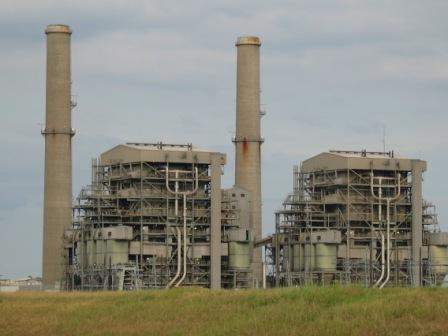 When it rains, it pours, or in this case, spews.
When it rains, it pours, or in this case, spews.
After getting a favorable ruling that struck down the EPA's flexible permit system last week, Team Perry seemingly scored another victory for its friends with Tuesday's ruling against the cross-state pollution rule.
Written by the Obama Administration to replace a similar Bush Administration rule that also got struck down by the courts (but is now back in at least partial effect…it hurts to think about this sometimes), the cross-state pollution rule was an attempt to federalize the problem of continental air pollution, much of it caused by big ol' dirty coal plants like the ones in East and Central Texas.
Texas can't regulate the coal plant pollution that wafts in from Illinois or Kentucky. Likewise, New York can't regulate Ohio facilities that send air pollution over its state lines. A federal solution covering all 50 states is required. Tuesday's ruling agreed, but concluded EPA hadn't given Texas and other states more time to come up with their own strategies to cut air pollution from coal plants. Maybe EPA was influenced by the fact that at the same time this strategy was being proposed, Governor Perry was rolling out plans to help streamline the permitting of 17 new coal plants in Texas.
Neither one of these rulings is as dreadful as it might seem at first. Both can be appealed. And both have mitigating circumstances that cushion the blow. With the flex permit case, all the facilities in Texas got standard operating permits eventually, making the ruling on the flex program itself moot. With the cross-state pollution rules, the Obama EPA itself said that two-thirds of all the health benefits from the rules had already been achieved with the partial implementation of the Bush rules they were meant to replace.
However, the cross state rules were not only supposed to be good in their own right, they also are the underpinning for a couple of other national pollution initiatives, including helping communities meet the new Ozone standard of 75 parts per billion, and the new, lower Particulate Matter pollution standard. Without the rules, these standards will be harder to achieve. And guess who's own plans begin to get mucked up by that failure? You guessed it, the state of Texas.
Because in the case of DFW's chronic smog problem, the Texas Commission on Environmental Quality had already factored compliance with the rule into its already obsolete 2012 clean air plan for the Metromess. That was one of the reasons we were going to see the lowest ozone levels ever recorded in DFW this summer. Without that backstop, it's going to be hard not only to just meet the old 1997 ozone standard of 85 ppb – something DFW has yet to do despite two official tries now over the last seven years – it's going to be hard to meet the much lower standard of 75 ppb.
If you've seen the TCEQ propaganda of the last couple of years, it touts how much pollution totals in Texas have decreased. The Commission uses these numbers to then promote the Perry Team philosophy of limited government intervention, suggesting that it's the TCEQ and Perry responsible for those declines. They are not. For the most part, what the state is touting are the results of federal programs that have decreased pollution systematically across the country – everything from new fuel and pollution standards for cars and trucks, to new federal standards for specific industries, like refineries and chemical plants. Throw in the things that federal citizen suits and pressure got done despite TCEQ – think cement plant pollution reduction in DFW for example – and you have most, if not all of the things reducing pollution in Texas that TCEQ is claiming credit for.
Without the cross state pollution rules, the oldest and dirtiest coal plants in Texas will continue to operate for the foreseeable future. And when the wind blows, some of their pollution will be breathed-in by DFW residents. In the short term, this is Team Perry's trophy for all you hard-working Texas residents – more crap in your lungs.
If the state keeps clearing away all the federal programs that have actually reduced pollution over the last 20-30 years, those total pollution numbers won't be going down much longer. They'll be holding even and then going up. Left to their own devices, Team Perry would have us living in a polluter's Pottersville. And then who will the Governor blame?
